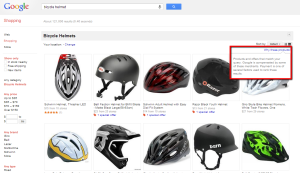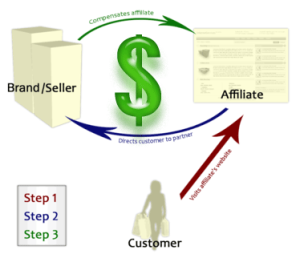Posts Tagged internet marketing
5 Top Tips to Convert Your Website Visitors into Paying Customers
Posted by Rosey Broderick in Ecommerce, Website Conversions, Website Usability on Monday
Following on from our last article ‘How to Increase Website Traffic’ we will  explore some of the basic elements required to turn this traffic into paying customers.
explore some of the basic elements required to turn this traffic into paying customers.
The primary goal for any website is to convert visitors into customers, it is also essential to raise brand awareness, improve your search rankings and drive traffic to your website through your social media channels.
However, once on your site you have a short timeframe to capture the user’s interest and make the conversion. Follow our five step formula to increase your websites conversions.
-
Know Your Target Audience
Research is the key to any successful online venture and this is required to build a clear understanding of your target audience. Through your research it is very beneficial to develop a profile of your target customer and include their demographics such as age, gender, marital status, income and location. Now the focus shifts to their underlying motivations; what is the major problem they are experiencing and how does your website solve this. It is essential for you to understand how you can solve their problems and highlight this on your website.
-
Make Your Website User Friendly
Internet users generally have a short time frame to conduct their search. They also have a short attention span, therefore if you have managed to get them to click onto your website it is imperative that your site is clear and they can navigate to the page they want with ease.
Some basic features that should be on your website include a logical menu, clean design, clear calls to action and simple functionality e.g. add to cart features, request a call-back etc. The primary goal is to make your site so user friendly that your users become customers in the shortest space of time. It is also worth researching why your customers are visiting your site and in turn giving them what they want in a clearly designed format.
-
Focus On Your Customers’ Pain Points.
Back to research, through effective research you will understand your target audience’s pain points. You must then use your website to present the ideal solution to their problem. Using this approach can help direct your overall marketing strategy and keep you focused on the needs of your visitor knowing that when they land on your site, they feel like they must take action and have your product or service to resolve their issue. By understanding your customers pain points and integrating this into your marketing strategy your website will attract customers and answer their most urgent needs.
-
Use Clear Language.
Regularly assess your marketing campaigns, look out for poof talk or buzzwords in your ad copy or technical lingo on your landing pages. If this is the case it’s time to rework your marketing strategy. The best advertisements and landing pages present a clear, concise message about your products that encourage customers to click through.
A simple question to ask at the beginning of any marketing campaign is “what does your product do, and for whom?” then provide a simple call to action.
-
Make Sure Your Products or Services Are Competitively Priced.
Where you are selling products online clearly communicate your unique selling points. This brings you back to research, make sure that your products or services are competitively priced. The chances are that visitors coming onto your website will be comparing you directly to your competitors. Ensure your website clearly communicates why your products or services are better than your competitors. This will help you convert visitors to customers.
Driving traffic to your site is the first step towards converting them into customers. Don’t lose them at this point, follow the steps above to improve your conversion rates. Is your website driving conversions? If not, contact us now at WebResults on 01-2071872 or visit our website and fill out a contact form to get more information or a FREE WEBSITE REVIEW at www.webresults.ie.
What is Product Listing Advertising (PLA)
Posted by Rosey Broderick in Display Advertising, Google, Online Advertising, Pay Per Click, PPC, PPC Tips, PPC Tools on Thursday
Product Listing Ads (PLA):
PLA is a pay per click (PPC) form of advertising. This form of advertising is carried out through Google’s Shopping Tool. Upon a relevant search query from a customer, Google will show up placed ads first. In this shopping tool, Google will include
“richer product information such as product image, price and merchant name” (Google 2013)
The search to the right shows the results for the search “bicycle helmets”, where placed ads are shown first. The fact that these ads are paid for, is only revealed when you click on the link “why these products” which explains that these are placed ads, as highlighted in the image to the right.
PLA is another form of PPC where the advertiser only pays Google after someone has actually clicked on their ad. The advertiser and Google will have agreed a set price for every click on their ad. The advertiser can also set a limit on how much they are willing to spend each day, ie:
Razor is willing to pay 50c for every click on the advert for their helmet. However they are only willing to spend €5 per day, so after 10 people click on their ad, the ad will be taken down until the next day. (There are options to choose when the ads are displayed or to spread the display over a period of time). They will also agree the amount of time the ad will run for, which can range anytime from hours to years.
Why use PLA?
Cost effective advertising:
With PLA you are only paying for people who click through to your site, a concept which has high rate of return on investment (ROI). At Webresults, we can help you arrange a pricing plan for your proposed ad
Place high on the list:
With PLA you will appear high on the search results with people seeing your product first
PLA weans out lesser competitors:
Google’s Shopping tool’s main appeal to customers is that it shows the best options first. Google users don’t have to thralls through pages to find what they want. Your products are seen at the top of their respective search
When it comes to PLA, it pays to pay!
For more information and advice on PLA, contact us!
The Benefits of Affiliate Marketing
Posted by Rosey Broderick in Uncategorized on Wednesday
Affiliate Marketing:
Affiliate marketing is a commission based agreement between 2 sites where one site rewards another for promoting their
products/services. The publishing site (the site promoting the products/services on behalf of the other, is only paid when a customer clicks on the direct link between the two sites or when a conversion occurs. The host site essentially acts as a “sales rep” for your product, who only gets paid on commission (Whatever the commission is, that is agreed between the parties!)
Affiliate marketing works best when the two sites are related in some way and have a similar customer base. An example of this would be Hertz car hire having an affiliation with Aer Lingus. Aer Lingus customers will be flying to another destination so they may need a car when they arrive. This provides Hertz with the perfect opportunity to gain a new customer by placing an advert for their car hire on the Aer Lingus site. Hertz will only then pay for the advert after the customer clicks on that advert/makes a booking. This is a clever and effective form of PPC.
The link left by the advertiser on the host site should lead directly to a call of action such as Buy Now or Call Now for a better return on investment (ROI). One of the most successful forms of affiliate programmes is when a special offer is involved and immediately catches the eye of the potential customer.
Affiliate marketing falls within the Action category of the 4 steps involved in a customer transaction (Attention – Interest – Desire – Action). This means that if the potential customer has clicked on the link then they are already interested in purchasing your product or service. When correctly executed Affiliate marketing can increase your *conversion optimisation and reduce your *bounce rate.
*Conversion Optimisation – Converting a visitor to your website into a transaction
*Bounce Rate – Where a visitor to your website leaves without clicking, giving information or making a transaction
Why Use Affiliate Marketing?
Approach a Select Customer Base:
If you choose the right affiliate site you will instantly tap into a client base similar to yours. At Webresults, we can help you set up and manage your affiliate programme, ensuring that you choose the right affiliates to gain optimum results for your business
Cost Effective Advertising:
With affiliate marketing you only pay for performance, so only once the visitor has taken an action, as agreed with publisher. This system is known to have a high ROI.
24 Hour Sales Rep:
With an affiliate programme, your product is being advertised 24/7 with no other input needed once it is set up.
Association With Larger Brand:
Having your product advertised on a large reputable affiliate site can have your seen in a higher regard by customers
For more information and advice on Affiliate Marketing, contact us at:
Adding Secondary Dimensions To Your Google Analytics
Posted by Rosey Broderick in Analytics, Analytics Tools, Google, Google Analytics on Tuesday
 Did you know that you can add more data to make you Google Analytics reports more useful? Find out how here to see how you can improve your analytics reports!
Did you know that you can add more data to make you Google Analytics reports more useful? Find out how here to see how you can improve your analytics reports!
To read the full article, visit Adding Secondary Dimensions To Your Google Analytics.
For more information on Analytics and web marketing, contact us. For more information on this topic, click here.
3 SEO Musts
 Are you struggling with your sites SEO and ranking? Read our 3 musts of SEO now to see how you can improve your website and it’s search engine ranking!
Are you struggling with your sites SEO and ranking? Read our 3 musts of SEO now to see how you can improve your website and it’s search engine ranking!
To read the full article, visit 3 SEO Musts.
For more information on search engine optimisation and web marketing, contact us. For more information on this topic, click here.
Link Building Through Directories, Is It Worth It?
 Do you still directories for link building? Read our article for more information about this form of SEO booster and see if you have been doing it the best way for your business!
Do you still directories for link building? Read our article for more information about this form of SEO booster and see if you have been doing it the best way for your business!
To read the full article, visit Link Building Through Directories, Is It Worth It?
If you need more help with your SEO, link building and web marketing – contact us. For more information on this topic, click here.
Spotting Trends in Customer Comments on Social Media
Posted by Rosey Broderick in Online Advertising, Social media, Social Media Management, social media tool, Web Marketing, web marketing management, web strategy on Thursday
 Do you track and log your customer mentions on social media? Learn how important it is for the future and how you can use the information to your businesses benefit!
Do you track and log your customer mentions on social media? Learn how important it is for the future and how you can use the information to your businesses benefit!
To read the full article, visit Spotting Trends in Customer Comments on Social Media.
If you need more help with your social media marketing, tracking and web marketing, contact us. For more information on this topic, click here.
Back to School With Your PPC Campaign
Posted by Rosey Broderick in Google Adwords, Google AdWords Management, Keyword Analysis, Keywords, negative keywords, Online Advertising, Pay Per Click, PPC, PPC Tips, PPC Tools, Search Engines, Web Marketing, web marketing management, web strategy on Wednesday
 PPC campaigns need constant monitoring and refreshing, check out our “back to school” PPC tips for advice and help on your PPC campaign and its ROI.
PPC campaigns need constant monitoring and refreshing, check out our “back to school” PPC tips for advice and help on your PPC campaign and its ROI.
To read the full article, visit Back to School With Your PPC Campaign.
For more information on PPC advertising and web marketing, contact us. For further information on this topic, click here.
Facebook Starts Removing Likes
 Do you buy your “likes”? Facebook is clamping down on this kind of behaviour, read our article for more information on how to avoid getting hit.
Do you buy your “likes”? Facebook is clamping down on this kind of behaviour, read our article for more information on how to avoid getting hit.
To read the full article, visit Facebook Starts Removing Likes.
For more information on social media marketing and web marketing, contact us. For more information on this topic, click here.
Keyword Research, SEO Vs PPC
Posted by Rosey Broderick in Keyword Analysis, Keywords, Online Advertising, Organic Search Rankings, Pay Per Click, PPC, PPC Tips, PPC Tools, Search Engine Optimisation, SEO, SEO Tools, Web Marketing, web marketing management, web strategy on Friday
 Do you treat your SEO and PPC keyword research the same? Read our article to find out why they’re different and why your keyword analysis should be carefully thought about.
Do you treat your SEO and PPC keyword research the same? Read our article to find out why they’re different and why your keyword analysis should be carefully thought about.
To read the full article, visit Keyword Research, SEO Vs PPC.
For more information on SEO, PPC and web marketing, contact us. For more information on this topic, click here.




